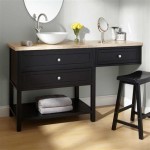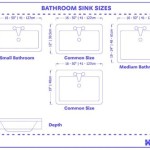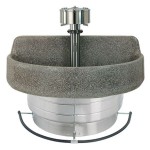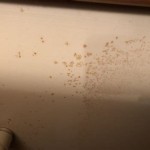Do Bathroom Fans Dehumidify? Understanding Their Role in Moisture Control
The bathroom, by its very nature, is a humid environment. Showers, baths, and even everyday activities like washing hands contribute to elevated moisture levels in this space. This humidity, if left unchecked, can lead to a host of problems, including mold and mildew growth, peeling paint, warped wood, and a generally unpleasant environment. Bathroom fans are commonly installed to combat these issues, but the question remains: do they truly dehumidify the bathroom?
The short answer is yes, bathroom fans play a significant role in dehumidifying a bathroom. However, it's crucial to understand how they achieve this, the limitations of relying solely on a bathroom fan, and the proper operation of these ventilation systems to maximize their effectiveness. Dehumidification, in the context of bathroom fans, isn't strictly about removing water vapor from the air to achieve a specific relative humidity level, as a dedicated dehumidifier would. Instead, bathroom fans primarily function by removing moist air from the bathroom and exhausting it outside, thereby preventing humidity buildup.
How Bathroom Fans Reduce Humidity
Bathroom fans operate on a relatively simple principle: they draw air from the bathroom and expel it outside the building. This process has several beneficial effects on the humidity levels within the bathroom. Firstly, the fan removes the source of the humidity – the shower steam, the hot water evaporating from the bath, or even the moisture from wet towels. By removing this moisture-laden air before it has a chance to saturate the bathroom, the fan prevents the relative humidity from rising to uncomfortable or damaging levels.
Secondly, as the fan exhausts the humid air, it creates a negative pressure within the bathroom. This negative pressure draws in drier air from the surrounding areas of the house. This influx of drier air further reduces the overall humidity level in the bathroom. The effectiveness of this process depends on the relative humidity levels in the rest of the house. If the house itself is already very humid, the impact of the bathroom fan on overall humidity reduction will be lessened.
Finally, bathroom fans help to prevent condensation. When warm, moist air comes into contact with cooler surfaces, such as mirrors, walls, and windows, the moisture in the air condenses, forming water droplets. This condensation is a prime breeding ground for mold and mildew. By removing the humid air before it can condense, the bathroom fan helps to keep surfaces dry and prevent the growth of these unwanted organisms.
Factors Affecting a Bathroom Fan's Dehumidifying Performance
While bathroom fans are effective at reducing humidity, their performance is influenced by several factors. Understanding these factors is crucial for ensuring that the fan is adequately sized and properly used to achieve the desired results.
Firstly, the size of the bathroom is a critical consideration. Bathroom fans are rated in cubic feet per minute (CFM), which indicates the volume of air the fan can exhaust in one minute. A larger bathroom requires a fan with a higher CFM rating to effectively remove the moist air. A general guideline is to choose a fan with at least 1 CFM for every square foot of bathroom space. For bathrooms with high ceilings, additional CFM may be required.
Secondly, the fan's ductwork plays a significant role in its efficiency. If the ductwork is undersized, kinked, or overly long, it can restrict airflow and reduce the fan's ability to exhaust air. Ideally, the ductwork should be as short and straight as possible, with smooth bends and turns. Insulating the ductwork can also help to prevent condensation within the duct, which can further impede airflow and promote mold growth.
Thirdly, proper installation is essential for optimal performance. A poorly installed fan may not be properly sealed, allowing air to leak around the edges and reducing its effectiveness. The fan should be securely mounted and properly vented to the outside. The vent outlet should be located away from windows, doors, and other openings to prevent the moist air from being drawn back into the house.
Finally, the fan's usage habits greatly impact its dehumidifying capabilities. To be effective, the fan must be used during and immediately after showers and baths. Leaving the fan running for 15-20 minutes after the moisture source has been removed allows it to effectively clear the remaining humid air from the bathroom. Some fans come with timers that automatically shut off the fan after a pre-set period, ensuring that it runs long enough to remove the moisture but doesn't waste energy.
Limitations of Bathroom Fans as Dehumidifiers
While bathroom fans are valuable tools for controlling humidity, it's crucial to recognize their limitations. They are primarily designed to remove moisture at its source, rather than to dehumidify the entire bathroom to a precise humidity level like a dedicated dehumidifier. Here are some key limitations to consider:
Firstly, bathroom fans are primarily effective at removing moisture generated during showers and baths. They are less effective at addressing underlying moisture problems, such as leaks in the plumbing or excessive humidity in the rest of the house. If the bathroom is consistently humid even without showering, a bathroom fan alone may not be sufficient to resolve the issue. Addressing the root cause of the moisture problem is essential in such cases.
Secondly, bathroom fans only operate when they are turned on. If the fan is not used consistently and effectively, it will not be able to prevent humidity buildup. Relying on manual operation can be problematic, as it's easy to forget to turn on the fan or to turn it off too soon. As mentioned earlier, fans with timers or humidity sensors can help to automate the process and ensure consistent performance.
Thirdly, the effectiveness of a bathroom fan is limited by the overall humidity levels in the rest of the house. If the house is already very humid, the fan will be drawing in moist air from other rooms, which will reduce its ability to lower the humidity in the bathroom. In such cases, a whole-house dehumidifier or other measures to reduce humidity throughout the house may be necessary.
Finally, older or poorly maintained bathroom fans may not be as effective as newer models. Over time, the fan motor can become less efficient, and the fan blades can accumulate dust and debris, which can reduce airflow. Regular cleaning and maintenance are essential for ensuring that the fan continues to operate at its optimal performance level.
In summary, bathroom fans are important tools for controlling humidity in bathrooms. They effectively remove moist air generated during showers and baths, preventing condensation and the growth of mold and mildew. However, their effectiveness is influenced by factors such as bathroom size, ductwork, installation quality, and usage habits. Bathroom fans have limitations, and they may not be sufficient to address underlying moisture problems or to lower humidity to a specific level. Understanding these factors and limitations is essential for ensuring that bathroom fans are used effectively to create a healthy and comfortable bathroom environment.

Choosing The Best Bathroom Dehumidifier

Bathroom Dehumidifier How To Reduce High Humidity In Your Morris Direct Nov 2024 Update

Wad B Warm Air Dehumidifier Bathroom Fan

Dehumidifiers For Bathrooms Selecting The Right One

Wad B Warm Air Dehumidifier Bathroom Fan

Bathroom Dehumidifier Vs Exhaust Fan A Quick Comparison Guide Unhappy Hipsters

Dehumidifying A Bathroom Without Fan Diy Guide Hunker
Does A Bathroom Fan Dehumidify Quora

No Exhaust Fan In The Bathroom Here Are Alternatives Decorrect

Why Is My Bathroom Fan Leaking Water
Related Posts







